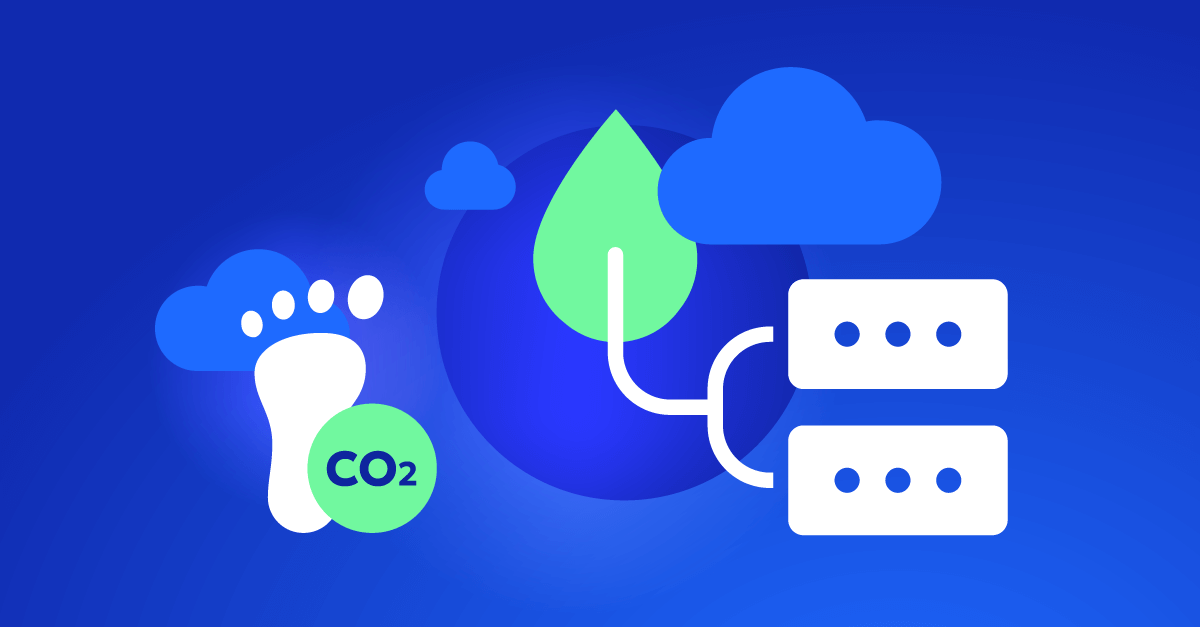The transition to cloud computing has revolutionized how businesses store, manage, and access their data. As the demand for cloud services grows, so does the awareness of the environmental impact of these technologies. This awareness has given rise to the concept of “green cloud” or sustainable cloud storage. While the primary motivation behind green cloud initiatives is environmental sustainability, businesses are beginning to recognize that going green can also be cost-effective. Here, we will explore how sustainable cloud storage can save money and support your company’s sustainability goals.
The case for sustainable cloud storage
Environmental impact of traditional cloud storage
Traditional data centers consume vast amounts of energy to power servers and maintain optimal operating conditions. According to a report by the International Energy Agency (IEA), data centers worldwide consumed about 330 MTCo2 of electricity in 2020, representing around 1% of global electricity demand. This energy consumption contributes significantly to carbon emissions, making data centers a critical target for sustainability efforts.
Cost implications of energy consumption
Energy costs are a significant component of the operational expenses of data centers. Reducing energy consumption through sustainable practices can lead to substantial cost savings. Green cloud storage solutions focus on enhancing energy efficiency, utilizing renewable energy sources, and optimizing resource usage, all of which contribute to lowering operational costs.
How Green cloud storage can be cost-effective
Energy Efficiency and Cost Savings
Green cloud providers employ advanced technologies and practices to enhance energy efficiency. These include:
- Energy-Efficient Hardware: Using servers and storage devices that consume less power while delivering high performance.
- Cooling Innovations: Implementing innovative cooling techniques such as liquid cooling and free cooling to reduce the energy required for maintaining optimal temperatures.
- Virtualization and Consolidation: Maximizing server utilization through virtualization, which reduces the number of physical servers needed and, consequently, the energy consumed.
Use of Renewable Energy
Many leading cloud providers, such as AWS, Google Cloud, and Microsoft Azure, are committed to using renewable energy to power their data centers. By investing in renewable energy sources like wind and solar power, these providers can reduce their reliance on fossil fuels, lower their carbon footprint, and benefit from the cost stability associated with renewable energy.
For example, Google Cloud has been carbon-neutral since 2007 and aims to run entirely on carbon-free energy by 2030. AWS is on a path to powering its operations with 100% renewable energy by 2025. These commitments not only benefit the environment but also help providers hedge against the volatility of fossil fuel prices, potentially leading to cost savings that can be passed on to customers.
Economies of Scale
Cloud providers can achieve economies of scale by pooling resources and optimizing their infrastructure. This means that the cost savings from energy efficiency and renewable energy investments can be distributed across a large number of customers, making green cloud solutions more affordable.
Regulatory Incentives
Governments and regulatory bodies worldwide are increasingly offering incentives for businesses that adopt sustainable practices. These incentives can take the form of tax breaks, grants, or subsidies, further reducing the costs associated with green cloud storage.
Examples
Google Cloud
Google Cloud’s data centers are twice as energy-efficient as the average enterprise data center. By using machine learning to optimize energy usage, Google has been able to reduce its cooling energy usage by 40%. These efficiencies translate into cost savings for customers who use Google Cloud services.
AWS
AWS offers a service called AWS Compute Optimizer, which helps customers identify over-provisioned resources and recommend rightsizing opportunities. By optimizing resource usage, customers can reduce their energy consumption and associated costs. Additionally, AWS’s commitment to 100% renewable energy means that customers are indirectly contributing to a more sustainable future while potentially benefiting from lower energy costs.
Best practices for adopting green cloud storage
- Choose a Green Cloud Provider: Select a cloud provider committed to sustainability and renewable energy. Look for providers with clear sustainability goals and transparent reporting on their environmental impact.
- Leverage Renewable Energy Credits (RECs): If your provider offers RECs, use them to offset your carbon footprint and support renewable energy projects.
- Regularly Review and Adjust: Continuously monitor your cloud usage and make adjustments to ensure you are maximizing efficiency and minimizing waste.
Sustainable workloads: An optimization strategy for energy and cost saving
In the realm of sustainable storage, optimizing workloads is a critical strategy for reducing energy consumption and minimizing environmental impact. It’s a strategy you can implement regardless of which cloud cost providers Sustainable workloads refer to the practice of managing and executing data processing tasks in a manner that maximizes efficiency while minimizing resource usage and carbon footprint.
Principles of Sustainable Workloads
- Efficiency Optimization: Ensure that computing resources are used to their full potential by avoiding idle or underutilized capacity. Techniques such as load balancing and resource scaling can dynamically adjust resources based on demand, thereby reducing waste.
- Energy-Aware Scheduling: Schedule tasks during off-peak hours when renewable energy sources are more likely to be available. This practice not only reduces costs but also aligns energy consumption with sustainable energy production.
- Virtualization and Containerization: Consolidate workloads onto fewer physical servers using virtualization and containers, enhancing overall utilization and reducing energy consumption.
- Dynamic Resource Management: Implement auto-scaling mechanisms to adjust resource allocation based on real-time demand, ensuring that only necessary resources are used at any given time.
Energy efficiency is key
Adopting sustainable cloud storage practices is not only beneficial for the environment but also a smart business strategy. By focusing on energy efficiency, leveraging renewable energy, and optimizing resource usage, businesses can reduce their operational costs while contributing to a more sustainable future. As cloud providers continue to innovate and scale their green initiatives, the cost benefits of going green in the cloud will only become more compelling.
More resources
- How to Begin the ESG Journey using Microsoft Sustainability Cloud (webinar)
- AWS Sustainability – Learn more about AWS’s sustainability initiatives and how they can benefit your business.
- Google Cloud Sustainability – Explore more about Google Cloud’s commitment to sustainability and carbon-free energy.
- Microsoft Azure Sustainability – Discover how Microsoft Azure is working towards a sustainable future.
- Sustainability in the Cloud (AWS) – In this video Aley Hammer is joined with Luke Hargraves, a Senior Solution Architect and Sustainability Ambassador at AWS to discuss sustainable cloud options.
By integrating sustainable practices into your cloud strategy, you can achieve both cost savings and environmental benefits, making it a win-win scenario for your business and the planet.










